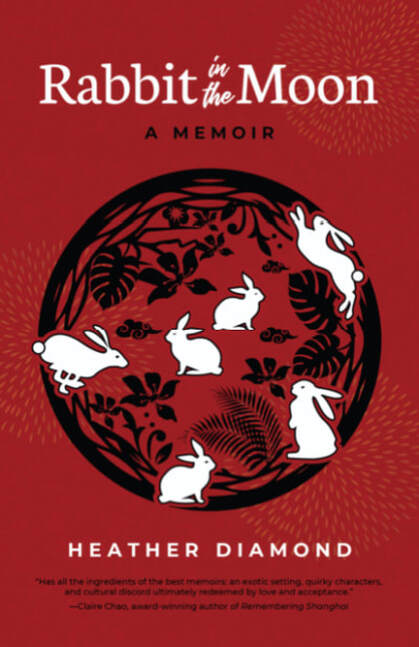Heather Diamond
|
Heather Diamond has a Ph.D. in American Studies and has worked as a bookseller, university lecturer, and museum curator. She is the author of American Aloha: Cultural Tourism and the Negotiation of Tradition and Rabbit in the Moon: A Memoir. Her essays have appeared in Memoir Magazine, Sky Island Journal, (Her)oics: Women’s Lived Experiences of the Pandemic, Rappahannock Review, Hong Kong Review, Waterwheel Review, Pacifica Review, and Undomesticated Magazine.
|
Rabbit in the Moon: A Memoir
|
Memoir
Moving between Hawaii, Hong Kong, and the USA, Rabbit in the Moon explores intercultural marriage, family values, and mid-life reinvention. In her mid-forties, the American author falls for Fred, a Chinese ethnomusicologist from Hong Kong. The couple settles in Hawaii where Heather is introduced to local culture. Then Fred goes on sabbatical, and Heather finds herself on the small island of Cheung Chau with his extended family. While grappling with culture shock, Heather witnesses a fascinating cycle of festivals and traditions. After becoming part of Fred’s family, Heather experiences reverse culture shock with her own, and must use what she has learned about herself abroad to reconnect at home. SAMPLE PDF |
American Aloha: Cultural Tourism and the Negotiation of Tradition
|
Non-Fiction
Based on archival research and extensive interviews with festival organizers and participants, this innovative cross-disciplinary study uncovers the behind-the-scenes negotiations and processes that inform the national spectacle of the Smithsonian Folklife Festival. Intersecting the fields of museum studies, folklore studies, Hawaiian studies, performance studies, cultural studies, and American studies, American Aloha supplies a nuanced analysis of how the carefully crafted staging of Hawai‘i’s cultural diversity was used to serve a national narrative of utopian multiculturalism―one that collapsed social inequities and tensions, masked colonial history, and subordinated indigenous politics―while empowering Hawai‘i’s traditional artists and providing a model for cultural tourism that has had long-lasting effects. Heather Diamond deftly positions the 1989 program within a history of institutional intervention in the traditional arts of Hawai‘i’s ethnic groups as well as in relation to local cultural revivals and the tourist industry. By tracing the planning, fieldwork, site design, performance, and aftermath stages of the program, she examines the uneven processes through which local culture is transformed into national culture and raises questions about the stakes involved in cultural tourism for both culture bearers and culture brokers. |


















